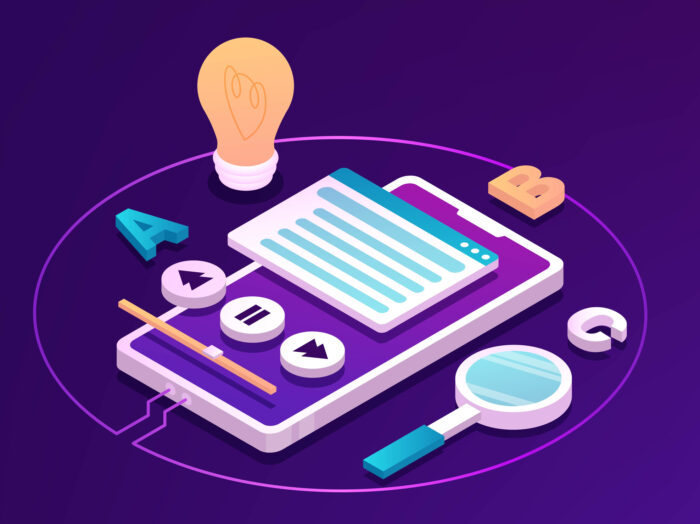With the increasing digitisation of the workplace, skills gaps are more common than ever before. In fact, a recent study concluded that 20% of the entire UK labour market could be underskilled for their job requirements by 2030.
For businesses, a skills gap analysis is the best way to find these gaps early and strategically help employees with upskilling and retraining options.
What is Skills Gap Analysis?
Skills gap analysis is a tool used by businesses to identify the difference between the skills your team currently has and the skills they need to achieve your business goals. It’s about understanding where your team’s strengths lie and where they might need improvement or additional training.
This process helps in:
- Improving Performance: By understanding and addressing skills shortages, you can create a more efficient team.
- Supporting Growth: Identifying skills gaps is vital for planning future growth. It helps you understand what skills to look for in new hires and how to develop your current team.
- Staying Competitive: A skills gap analysis can help you keep pace with industry changes and technological advancements.
6 Steps to Conduct a Skills Gap Analysis
1. Set Your Goals
First, consider how your workforce skills will support your overall business strategy. Review your long-term objectives, such as market expansion, product development, or operational enhancements. From these objectives, discern the specific skills required. For instance, if digital expansion is a goal, focus on identifying skills in digital marketing and e-commerce.
Your goals should be SMART: Specific, Measurable, Achievable, Relevant, and Time-bound. For example, instead of a vague goal like “improve IT skills,” set a specific goal like “develop advanced data analysis capabilities within the team by the end of Q2.”
You should also incorporate future industry trends and technological advancements into your goal setting. For example, if artificial intelligence (AI) is becoming increasingly relevant in your industry, include AI proficiency in your skills development goals.
2. Check Current Skills
Next, assess the current skill levels of your team. This involves a thorough evaluation of the existing capabilities within your workforce. You can use various methods to collect this information, such as surveys, one-on-one interviews, performance reviews, or skill assessment tools. The aim here is to create a detailed inventory of the skills, qualifications and experiences your employees currently hold.
3. Find the Gaps
Start by examining each job role within your organisation. For each role, list the skills and competencies that are crucial for effective performance. This might include technical skills specific to the role, as well as soft skills like communication and teamwork. Compare these requirements with the current abilities of your employees in these roles to identify any discrepancies.
Now, use skills assessments to gain a deeper understanding of your employees’ capabilities. These assessments can be in the form of self-evaluations, manager assessments, or formal testing. The goal is to obtain an objective view of each employee’s skills, which helps in pinpointing where the gaps are.
4. Look at the Data
Begin by compiling all the data collected from skills assessments, employee feedback, job role analyses, and performance reviews. Organise this data in a structured format, such as a spreadsheet or database, which allows for easy analysis.
Look for trends such as frequently missing skills across various departments or skill levels that consistently fall below the required standards. Quantitative analysis, such as the number of employees lacking a specific skill or the proficiency levels required versus what is available, can offer clear insights into the magnitude of the gaps.
The following table shows how you could map the skills gaps across a specific department.
| Skill | Current Score | Desired Score | Notes / Comments |
| Instructional Design | 3 | 5 | Needs to improve in applying learning theories |
| E-learning Development Tools | 4 | 5 | Familiar with tools, but advanced features underused |
| Graphic Design for Learning Materials | 2 | 4 | Requires upskilling in graphic design principles |
| Video Production and Editing | 3 | 5 | Improve editing skills for engaging video content |
| Content Writing | 4 | 5 | Strong writing skills, but need to refine for different audiences |
| Research and Analysis | 4 | 5 | Good research skills, but deeper analytical skills needed |
| Learning Management System (LMS) Proficiency | 3 | 4 | Enhance skills in LMS customisation and reporting |
| Overall Content Development Proficiency | 3.2 | 4.7 |
5. Plan What to Do Next
With the data in hand, begin to create a tailored strategy for skills development. This might include a mix of internal training, external courses, workshops, mentoring programmes, and self-learning initiatives. The strategy should be specific to the needs of your organisation and flexible enough to adapt to changing requirements.
For skills that are significantly lacking or are highly specialised, consider hiring new talent who possess these skills. Alternatively, outsourcing certain functions or tasks to external experts can be a viable solution. This approach is often faster and more cost-effective for highly specialised skills that are not core to your business.
You should also integrate skills development into the career progression plans of your employees. This not only helps in bridging the skills gaps but also boosts employee motivation and retention by providing clear career development opportunities.
6. Put the Plan into Action
Implementing your plan is about turning your strategy into action. This may involve rolling out training programs, starting recruitment processes, or realigning job roles and responsibilities. Ensure that the implementation is monitored for progress and effectiveness.
For each action in your plan, set specific goals and timelines. This could include deadlines for completing training programs, dates for reassessment of skills levels, and milestones for the implementation of new skills in day-to-day operations. Clear timelines ensure accountability and help in tracking progress.
Ensure that adequate resources, such as budget, time, and personnel, are allocated for the implementation of the plan. Assign clear responsibilities to team members or departments for different aspects of the plan to ensure effective execution.
Finally, define clear metrics to measure the success of your skills development efforts. These could include improvements in performance metrics, employee competency levels, and the impact on business outcomes.
What are examples of skill gaps?
Understanding common types of skill gaps can help you better identify and address them in your own organisation. Skill gaps can vary widely depending on the industry, the specific nature of the business, and the evolving market demands. Here are some common examples:
Technical or Hard Skills Gaps
- Digital Literacy: In the age of digital transformation, lacking skills in digital tools and platforms can be a significant gap.
- Specialised Industry Skills: These are specific skills unique to your industry, like programming languages in IT or advanced financial analysis in finance.
- Data Analysis and Management: As data becomes more crucial in decision-making, the ability to analyse and interpret data is increasingly important.
Soft Skills Gaps
- Leadership and Management Skills: As businesses grow, the need for effective leadership and management becomes critical.
- Communication Skills: Effective communication, both internal and external, is vital for the smooth operation of any business.
- Problem-Solving and Critical Thinking: The ability to think critically and solve problems is essential in a fast-paced business environment.
Adaptability and Continuous Learning
- Adaptability Skills: In a rapidly changing business landscape, the ability to adapt and embrace change is crucial.
- Learning and Development: The willingness and ability to continuously learn and upgrade one’s skills is a gap that can hinder growth.
Specific Examples in Context
- Retail Sector: In retail, a common skill gap might be in customer relationship management or the latest point-of-sale technology.
- Manufacturing Industry: Skills gaps in the manufacturing sector could include automation and robotics, especially as factories become more technologically advanced.
- Service Industry: In the service sector, gaps might appear in customer service and digital engagement strategies.
Identifying skill gaps is not just about recognising what is missing but also understanding how these gaps impact your business operations and growth. Once you’ve identified specific skill gaps in your organisation, you can start to plan how to address them through training, recruitment, or restructuring.
Omniplex Guide is a digital adoption platform that can help you deliver training to address your business skill gaps. To find out more get in touch or book a free product tour.




